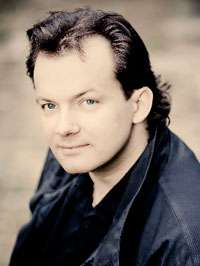|
Back
The Witch's Tale New York
Avery Fisher Hall, Lincoln Center
02/06/2013 - & February 7, 8, 9, 2013
Antonin Dvorák: The Noon Witch, Opus 108
Johannes Brahms: Violin Concerto in D Major, Opus 77
Béla Bartók: Concerto for Orchestra, BB123, Sz. 116
Christian Tetzlaff (Violin)
New York Philharmonic Orchestra, Andris Nelsons (Conductor)

The Noon Witch (© ”Polednice” by Faqy)
During the intermission last night, I asked half a dozen people whether the Antonín Dvorák Noon Witch was true to the poem. And whether the poem was too gory for them. The replies were diverse, ranging from “Huh?’ to “Poem?”
I frankly felt shocked. Antonín Dvorák, in this astounding piece of music, produced a gruesome image about a ghost, the death of a child, a traumatized family. More important, he composed line for line from the original Czech tale. Not even Richard Strauss wrote such a literal transcription.
Musically it’s dramatic enough, for Dvorák’s symphonic poems in many ways are underappreciated. But the musical depiction of a screaming child, a mother tripping and smothering the kid to death, the eerie depiction of the Noon Witch herself, the happy father discovering his child’s death, makes this work...oh, so grotesque. Up there with Mussorgsky’s Bare Mountain.

A. Nelsons (© Marco Borggreve)
Well, if the audience missed the point, then Latvian conductor Andris Nelsons certainly made his dramatic points. I had never seen a conductor so bouncy, such a magician with his baton, his hands, his body, kicking his heels, springing up in the air, darting from one musician to another. Yes, the young Seiji Ozawa came close, but Maestro Nelsons had a singular animation.
Was that necessary? He certainly produced a gruesome veneer, as well as exciting brassy witchly aurae to the opening Noon Witch. And in the Bartók Concerto For Orchestra, especially the final two movements were as tense, given as much excitement, with transparent fugues, with riproaring strings as possible. On the other hand, I doubt if the brilliant experienced players of the New York Philharmonic Orchestra needed cueing for every entrance, such two-handed heaven-raising gestures for each crescendo.
Still, this is nit-picking. With the right orchestra, this Bartók is perhaps the least mordant, the clearest, the most joyous of all his symphonic works. And Mr. Nelsons was happy to bring out the operetta tunes, the satire, the roller-coaster melodies, and all the fun. One can’t believe that this Concerto commission was a work of charity for a suffering, very poor composer who never felt at home in America. The piece is part frivolous, part ecstatic, and the New York Phil knew how to handle all the virtuoso solos.

C. Tetzlaff (© Giorgia Bertazzi)
The partnership between Andris Nelsons and violinist Christian Tetzlaff was a bit problematic. Mr. Tetzlaff is such a brilliant virtuoso that he can sail through this extremely difficult concerto without breaking a sweat. Mr. Nelsons, though, was all for pinpointing everything in the orchestra, extracting some splendid solos (the oboe at the beginning of the Adagio was unbeatable), and exact ensemble work. This was Mr. Tetzlaff’s ideal of Brahms against the more spontaneous conducting of Mr. Nelsons.
Only in the finale, where Mr. Tetzlaff ignored the grazioso of the movement and tore away with the Gypsy tunes, while Mr. Nelsons kept his orchestra on a leash, did one feel that something was wrong.
But that was a minuscule objection. The audience loved it, this reviewer is always in awe of Mr. Tetzlaff, and Mr. Nelsons looked, felt and gave all three works his considerable physical fervor.
Harry Rolnick
|